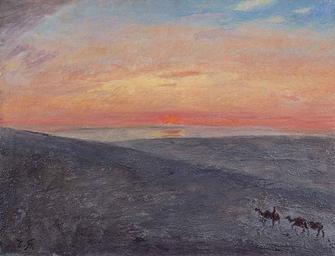Visual poetry is an evocative realm where emotion intertwines seamlessly with aesthetics, creating a powerful dialogue between the viewer and the artwork. This article will delve into the various dimensions of visual poetry, particularly focusing on self-portrait photography. Through different techniques, styles, and concepts, we'll explore how artists can express their innermost feelings while simultaneously crafting stunning visual narratives.
What is Visual Poetry?
Visual poetry combines elements of https://thoughthub174.cavandoragh.org/harnessing-natural-light-for-stunning-visual-pictures art and text to evoke emotions and provoke thought. It often blurs the boundaries between literature and visual arts. The purpose is to create a multi-sensory experience that resonates deeply with the audience. In essence, it’s about conveying feelings through images just as much as through words.
The Intersection of Emotion and Aesthetics
In visual poetry, emotion and aesthetics work hand in hand. The aesthetic quality of an image can amplify its emotional weight. For instance, a somber color palette might evoke sadness, while vibrant colors could elicit joy. Artists must carefully consider how their choices impact the viewer's emotional response.
Self-Portrait Photography: An Overview
Self-portrait photography is one of the most intimate forms of visual art. It allows artists to explore their identity while inviting viewers into their personal world.
Definition of Self-Portrait Photography
Self-portrait photography can be defined as a genre where the artist captures images of themselves, often using various techniques to convey emotions or themes. Unlike traditional portraits taken by another person, self-portraits provide a unique opportunity for self-exploration.

Different Types of Self Portraits
Traditional Self-Portraits: These are straightforward representations where the subject poses for the camera. Abstract Self Portrait Photography: This form focuses more on concepts rather than precise likenesses. Faceless Self Portrait Ideas: Here, the emphasis is on anonymity; artists may hide their faces or use creative framing. Contemplative Photography: This type encourages mindfulness and reflection through imagery.Exploring Contemplative Photography
What is Contemplative Photography?
Contemplative photography encourages viewers to see beyond mere images. It invites them to engage deeply with what they observe. The practice fosters a sense of mindfulness—an awareness that enhances both capturing and viewing photographs.

Techniques in Contemplative Photos
Mindful Observation: Taking time to absorb surroundings before snapping a photo. Emotional Reflection: Considering what feelings arise during both the shooting process and the viewing experience. Minimalism: Focusing on simplicity by eliminating distractions from the frame.The Role of Aesthetic Choices in Self-Portraits
Aesthetic decisions play a crucial role in shaping both emotion and message within self-portrait photography.
Color Theory in Portraiture
Colors evoke specific emotions:
- Warm colors (red, orange) can create feelings of warmth or energy. Cool colors (blue, green) often impart tranquility or melancholy.
Lighting Techniques for Impactful Images
Lighting can drastically change mood:
- Soft lighting creates intimacy. Harsh shadows may invoke tension or drama.
Crafting Aesthetic Photos for Print
When considering which aesthetic photos to print for display or sale:
Custom Photo Size Printing Options
Selecting custom print sizes allows artists to tailor their work according to space requirements:
Standard Sizes (5x7, 8x10) Custom Dimensions for Unique Spaces Large Format Prints for StatementsAesthetic Wall Pics That Resonate
Choosing aesthetic wall pics involves understanding your audience:
- Highlight emotional connection over mere decoration. Consider themes that align with viewer interests.
Creative Techniques in Self Portrait Photography
Exploring innovative approaches can elevate your self-portrait work.
Using Backgrounds Effectively in Self Portraits
The background sets context:
Personal Spaces: Home settings add intimacy. Nature Settings: Outdoor backdrops invoke freedom or serenity. Abstract Backgrounds: These focus attention on emotional expression rather than location.Experimenting with Different Perspectives
Changing angles can dramatically alter perception:
High Angles – Can convey vulnerability. Low Angles – Often evoke strength or power.Abstract Self-Portrait Photography Techniques
Abstract approaches offer limitless creative possibilities when capturing self-images.

Creating Surreal Compositions
Surrealism challenges reality; incorporating unexpected elements can create striking abstract images:
Layering Images Utilizing Props UniquelyFaceless Concepts in Abstract Work
Focusing away from traditional representation invites viewers to connect emotionally without preconceived notions:
Using Silhouettes Incorporating Textures Instead of FacesThe Emotional Impact of Aesthetic Colorful Portrait Photography
Colorful portraits captivate audiences with their vibrancy and energy.
Choosing Color Palettes that Evoke Feelings
Different palettes trigger various emotional responses:
Monochromatic Schemes – Create harmony but may lack dynamism. Complementary Colors – Generate excitement through contrast.Capturing Contemplative Images Through Personal Narratives
Telling your story through contemplative images adds depth to your work:
Using Symbolism in Photography
Symbolic elements enrich storytelling:
Objects Reflecting Personal Meaning Natural Elements Signifying ChangeFAQs About Visual Poetry and Self-Portrait Photography
Q1: What makes self-portrait photography unique? A1: Self-portrait photography offers an intimate exploration of identity that traditional portraiture cannot replicate.
Q2: How does contemplative photography differ from other styles? A2: Contemplative photography emphasizes mindfulness and emotional connection instead of merely capturing moments visually.
Q3: What are some popular techniques for creating abstract self portraits? A3: Techniques include using surreal compositions, experimenting with faceless concepts, and focusing on textures over traditional representations.
Q4: How do color choices affect emotional impact in photographs? A4: Colors have inherent psychological associations; warm colors tend toward energy while cool colors lean towards calmness or introspection.
Q5: What are effective backgrounds for self portraits? A5: Successful backgrounds complement your theme; personal spaces convey intimacy while nature can reflect freedom or vastness.
Q6: Why print aesthetic photos? A6: Printing allows you to present your work physically; it enhances appreciation by transforming digital art into tangible experiences that resonate emotionally with viewers.
Conclusion
In summary, "Visual Poetry: Connecting Emotion and Aesthetics in Your Work" encompasses a diverse array of styles such as self-portrait photography, contemplative imagery, abstract expressions, and more—all aimed at forging deep connections between artists' inner worlds and their audiences' perceptions through thoughtfully crafted visuals that speak volumes without uttering a word!
By exploring these techniques further—experimenting relentlessly—you too can embark on this journey toward mastering visual poetry!